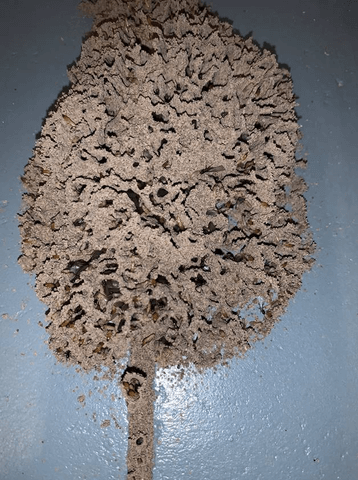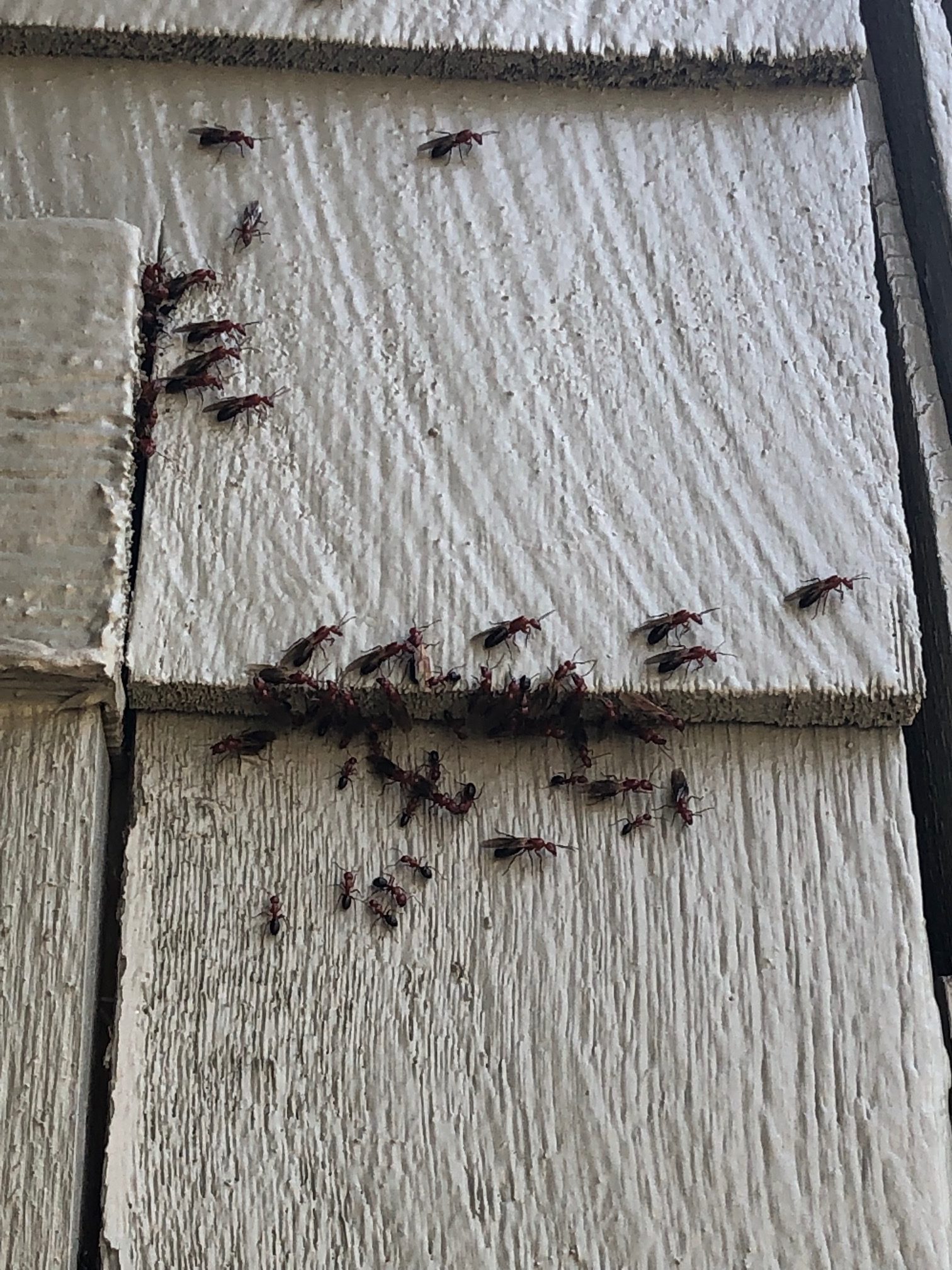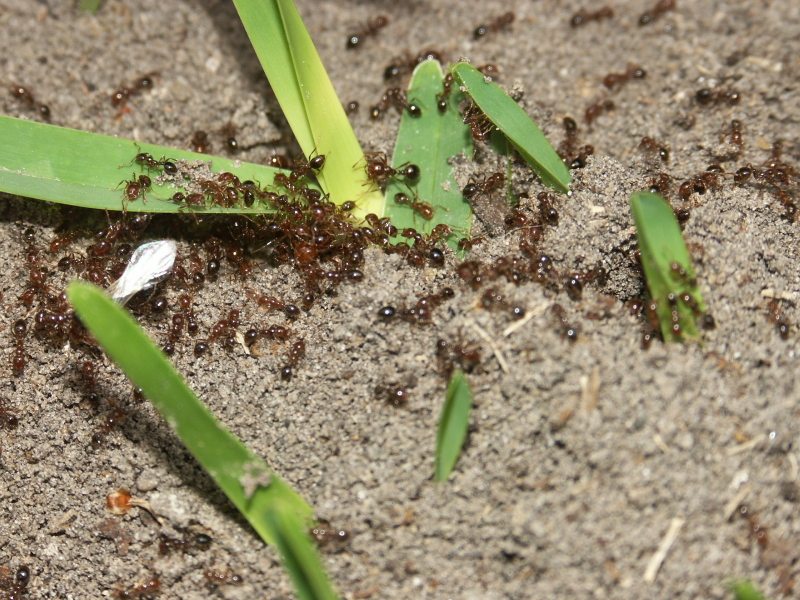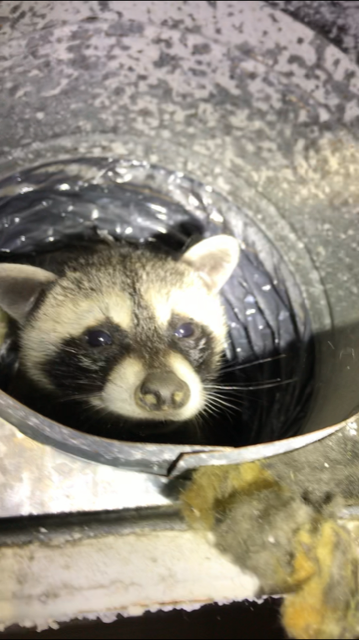Rasberry (Carribean) Crazy Ant
Provided by our friend Wizzie Brown – Entomologist Texas Agrilife Extension.
A new exotic invasive pest ant species was found around Houston (Harris County), Texas in 2002, and has begun to spread with human assistance. The ant has yet to be identified to species and is commonly referred to as the Rasberry crazy ant, Nylanderia sp. nr. pubens (LaPolla, et al). Currently, little is known regarding the biology of this ant. The Center for Urban and Structural Entomology at Texas A&M University is investigating food source attraction, colony growth and immature development. (See Jason Meyers’ Dissertation: “Identification, distribution and control of an invasive pest ant, Paratrechina sp. (Hymenoptera:Formicidae), in Texas”). However, research regarding other ant species in the genus, Nylanderia, is available and may offer close approximations for this species.
What is an “invasive species”? (See the invasive species fact sheet)
Identification: How do I spot them?
Suspect Rasberry crazy ants if you see a lot of ants with the following characteristics (see full listing of characteristics below):
- Appearance of many (millions) of uniformly-sized 1/8 inch long, reddish-brown ants in the landscape; foraging occurs indoors from outdoor nests.
(Click to see video of these ants found in the grass.) - Ants that form loose foraging trails as well as forage randomly (non-trailing) and crawl rapidly and erratically (hence the description “crazy” ant).
- Ant colonies (where queens with brood including whitish larvae and pupae, See image on right) occur under landscape objects like rocks, timbers, piles of debris, etc. These ants do not build centralized nests, beds, or mounds, and do not emerge to the surface from nests through central openings.
A guide entitled, “The Common Ant Genera of Texas” (B-6138) is available at: http://agrilifebookstore.org.This reference will help identify the ants in the genus, Nylanderia to which this new ant belongs. Several other species of Nylanderia occur in the state. A key to the Rasberry crazy ant was developed by Jason Meyers (See Identification Key)(** Note to view the key you will need to have Microsoft PowerPoint or PowerPoint Viewer installed on your computer).
In Texas, more specifically in the Houston area, the common name being used for Nylanderia sp. nr. pubens is the Rasberry crazy ant. The description of the Rasberry crazy ant is very similar to the species description for Nylanderia pubens, the Caribbean crazy ant. Research on the correct identification of this ant in Texas, including the morphology and phylogenetic characteristics, is ongoing. Currently, there is no approved common name for this ant by either the Code of Zoological Nomenclature nor the Entomological Society of America.
The crazy ant, P. longicornis, may in some cases create massive, but localized numbers. These species look similar, but have marked differences. Paratrechina longicornis antennae and legs are significantly longer than that of N. sp. nr. pubens. Paratrechina longicornis thorax is extended in length considerably, compared to that of the Nylanderia species. Although the use of color as an identification tool is not to be relied upon, the crazy ant is often jet black in color, especially when compared to the typically reddish-brown of N. sp. nr. pubens.
Impact: What do they do?
In infested areas around the Houston area, large numbers of Rasberry crazy ants have caused great annoyance to residents and businesses. In some situations, it has become uncomfortable for residents to enjoy time in their yards. Companion animals may, in some cases, avoid the outdoors as well, and wildlife such as nesting songbirds, can be affected. The economic impact is currently unknown.
Biting and medical implications to people, livestock and wildlife: Rasberry crazy ants do not have stingers. In place of a stinger, worker ants possess an acidopore on the end of the abdomen, which can excrete chemicals for defense or attack. They are capable of biting, and when bitten, they cause a relatively sharp pain that quickly fades.
A related species in this genus, Nylanderia fulva, has been a serious pest in rural and urban areas of Colombia, South America. In this case, they reportedly displaced all other ant species and caused small livestock (e.g. chickens) to die of asphyxia. Larger animals, such as cattle, have been attacked around the eyes, nasal fossae and hooves. The ants also caused grasslands to dry out (dessicate) because the ants aggravated sucking insect pests (hemipterans) because the ants feed on the sugary “honeydew” produced by these plant feeding insects.
A guide entitled, “The Common Ant Genera of Texas” (B-6138) is available at: http://agrilifebookstore.org.This reference will help identify the ants in the genus, Nylanderia to which this new ant belongs. Several other species of Nylanderia occur in the state. A key to the Rasberry crazy ant was developed by Jason Meyers (See Identification Key)(** Note to view the key you will need to have Microsoft PowerPoint or PowerPoint Viewer installed on your computer).
In Texas, more specifically in the Houston area, the common name being used for Nylanderia sp. nr. pubens is the Rasberry crazy ant. The description of the Rasberry crazy ant is very similar to the species description for Nylanderia pubens, the Caribbean crazy ant. Research on the correct identification of this ant in Texas, including the morphology and phylogenetic characteristics, is ongoing. Currently, there is no approved common name for this ant by either the Code of Zoological Nomenclature nor the Entomological Society of America.
The crazy ant, P. longicornis, may in some cases create massive, but localized numbers. These species look similar, but have marked differences. Paratrechina longicornis antennae and legs are significantly longer than that of N. sp. nr. pubens. Paratrechina longicornis thorax is extended in length considerably, compared to that of the Nylanderia species. Although the use of color as an identification tool is not to be relied upon, the crazy ant is often jet black in color, especially when compared to the typically reddish-brown of N. sp. nr. pubens.
Impact: What affect do they have on wildlife?
Wildlife such as nesting songbirds is irritated by the Rasberry crazy ants. Masses of crazy ants covering the ground and trees likely affect ground and tree-nesting birds and other small animals and cause wildlife to move out of the area.
The ants are even displacing red imported fire ants in areas of heavy infestation. However, after experiencing the Rasberry crazy ant, most residents prefer the fire ant.
A related species of crazy ant has been a serious pest in South America, reportedly displacing all other ant species. In addition, the South American crazy ant pest caused chickens to die of asphyxia due to ants obstructing their nasal passages. Larger animals, such as cattle, have been attacked around the eyes, nasal area and hooves.
Very little is currently known about the wildlife impact from Rasberry crazy ants. If you observe any affect to wildlife, please report it to Texas Parks and Wildlife Department by submitting the “Wildlife Impact Report” form.
Biology: ID Characteristics & Behavior
Worker ant body characteristics:
Rasberry crazy ant worker
Photo by Johnny Johnson
- Coloration: Adult colony members, including queens, males and workers, are reddish-brown (although lightness or darkness of their body color may vary)
- Size: Worker ants are all similar in size (they are monomorphic), with a body length of 1/8 inch.
- Worker ants have long legs and antennae, although not as long as the crazy ant, P. longicornis, and their bodies have numerous, long, coarse hairs. The antenna have 12-segments with no club.
- There is a small circle of hairs (acidopore) present at tip of the abdomen (as opposed to the typical stinger found in most ants), a characteristic of formicine ants found within the Formicinae subfamily.
Rasberry crazy ant male alate (top) and pupae (bottom)
Photo by Bart Drees
Colonies:
- Rasberry crazy ants have been found in enormous numbers. They are social insects that live in large colonies or groups of colonies that seem to be indistinguishable from one another.
- Colonies contain many queen ants (they are polygyne colonies), worker ants and brood consisting of larval and pupal stages. Pupae are “naked” or without cocoons. They periodically produce winged male and female forms called sexuals or reproductives.
- The size of the colony infestations can be large and display super colony (unicolonial) behavior.
Trailing behavior:
- Rasberry crazy ants foraging trails are quite apparent (≥10 cm) and individuals forage erratically, hence the typical reference to “crazy” ant. Foraging trails will often follow structural guidelines (See image below), however, large trails can be found in open areas.
Nesting and nesting behavior:
- Rasberry crazy ant colonies can be found under or within almost any object or void, including stumps, soil, concrete, rocks, potted plants, etc.
- Nests primarily occur outdoors, but worker ants will forage indoors, into homes and other structures.
- Nesting occurs under almost any object that retains moisture.
Food and feeding behavior:
- Rasberry crazy ants eat almost anything; they are omnivorous.
- Worker ants commonly “tend” sucking hemipterous insects such as aphids, scale insects, whiteflies, mealy bugs, and others that excrete a sugary (carbohydrate) liquid called “honeydew” extracted from host plants when stimulated by the ants.
- Workers are attracted to sweet parts of plants including nectaries, damaged and over-ripe fruit.
- Worker ants also consume other insects and other small vertebrates for protein.
Seasonal abundance:
- Few worker ants forage during cooler winter months.
- In spring foraging activity begins and colonies grow, producing millions of workers that increase dramatically by mid-summer (July-August).
- Ant numbers remain high through fall (October-November).
Rasberry crazy ant female alate
Photo by Johnny Johnson
Rasberry craz ant male alate
Photo by Johnny Johnson
Natural spread:
- No mating (nuptial) flights have been observed in the field, despite the periodic development of winged male and female ants, called sexuals or reproductives. This indicates that colonies spread or propagate by “budding” with breeding occurring at/near the edge of the nest, creating new colonies at the periphery. Annual rate of spread by ground migration is not known.
Distribution: Where are they found?
The Rasberry crazy ant has only been known in the state of Texas (near Pasadena) since 2002. High numbers of the ants have been found in localized spot infestations in southeast Houston (Harris County), including Houston, Pasadena, Deer Park, Friendswood, San Jacinto Port, Pearland, Seabrook and La Porte.
Localized infestations have also been confirmed from areas in Bexar, Brazoria, Brazos, Cameron, Fort Bend, Chambers, Galveston, Hardin, Harris, Hidalgo, Jefferson, Jim Hogg, Liberty, Matagorda, Montgomery, Nueces, Orange, Travis, Walker, Wharton and Williamson counties. New infestations are suspected beyond these areas of infestation. However, sample identifications have not been confirmed. This ant has the potential to spread well beyond the current range in coastal Texas. However, it is a semi-tropical ant and potential northern distribution will be limited by cooler weather conditions.
Management: What can you do for them?
Many of the typical control tactics for other ants do not provide adequate control of the Rasberry crazy ant. Because colonies predominantly nest outdoors, reliance on indoor treatments (see Rasberry Crazy Ant Fact Sheet or YouTube Video) to control these ants foraging inside structures is not effective.
Rasberry crazy ant workers are not attracted to most bait products (see B-6099, “Broadcast Baits for Fire Ant Control“) and the one known product they are attracted to (Whitmire Advance Carpenter Ant Bait formulation containing abamectin (Label and MSDS), see E-412 “Carpenter Ants“) does not offer enough control.
There are treatments available for this ant that offer temporary “buffer zones” using contact insecticides applied to surfaces, such as those containing acephate, pyrethroid insecticides (bifenthrin, cypermethrin, cyfluthrin, deltamethrin, lambda-cyhalothin, permethrin, s-fenvalerate, and others) or fipronil. These treatments are often breeched within 2-3 months post application.
Effective products involved with the treatments are not readily available to the consumer. If you suspect your house or property is infested with these ants, call a professional pest control provider. After treatment, or when making multiple applications over time, piles of dead ants must be swept or moved out of the area in order to treat the surface(s) underneath.















